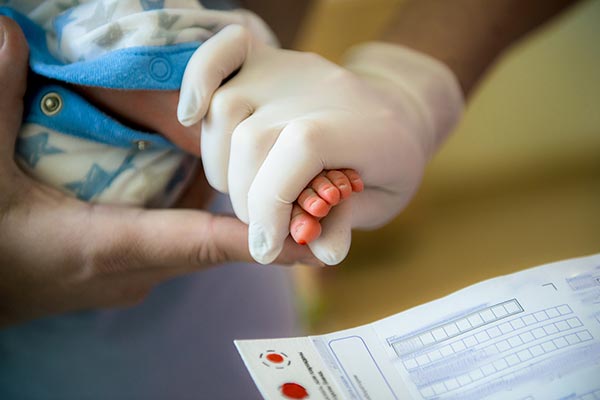Recent Posts
THE STORY OF MY WILSON DISEASE: AGE 8 TO 53
By Barbara Noci I was born on the 6th of April 1972 in Empoli, a little city near Florence in [...]
Travis’s Story of Wilson Disease
Rare and Rural By Rhonda Rowland, WDA President We all love a small town. Images come to mind of holiday [...]
Newborn Screening for Wilson Disease
A 25-year dream coming close to reality By Alice Williams, WDA Communications Director Since the 1960s, the United States has [...]
Can Copper be Absorbed Through the Skin?
By Edward Tabor, MD, WDA Board Member The main source of copper for humans is food, and Wilson disease patients [...]
They Said “Yes” to Gene Therapy
By Rhonda Rowland, WDA PresidentWe continue the story of two trailblazers who are among the first Wilson disease (WD) patients [...]
Meet the Inaugural Gene Therapy Candidates
By Rhonda Rowland, WDA President The two gene therapy clinical trials for Wilson disease (WD) launched by Ultragenyx and [...]
Wilson Disease Reviewed in Top Medical Journal
The Wilson Disease Association (WDA) is excited to share that the review article, “Current and Emerging Issues in Wilson’s Disease,” by Dr. Eve Roberts and Dr. Michael Schilsky is published in this week’s New England Journal of Medicine (NEJM). The article provides a critical summary of what’s known about the rare genetic liver disease and emerging therapies, diagnostic tools and monitoring approaches.
The NEJM is among the most prestigious peer-reviewed medical journals worldwide. “Medical students get in the habit of reading NEJM and that sort of summarizes its importance,” said Dr. Roberts, who was invited to write the review and asked Dr. Schilsky to join her. “The review says, ‘Enough progress has been made in WD that it warrants a timely look.’”
While the NEJM has published other Wilson disease (WD) articles during its 200-year history, this is the first comprehensive review. The importance in reaching a general medical audience, as opposed to specialists in the field, increases the opportunity for disease awareness.
“It helps with keeping the profile of the disease up, so doctors will consider it for diagnosis,” said Dr. Schilsky. “It also helps show how advances in medicine have evolved and how this impacts Wilson disease and vice versa.”
Drs. Roberts and Schilsky are co-lead authors of the WD Guidance published by the American Association for the Study of Liver Diseases (AASLD) in 2022. The review article in NEJM provides the opportunity to go beyond what is already established and look ahead.
“It’s huge to have this forum to share our thoughts on where we are, and where we are going,” said Dr. Schilsky, who directs Yale’s WD Center of Excellence.
The review describes seven emerging therapies that are in the early stages of development and several emerging diagnostic techniques that could also possibly be used to help in monitoring WD. Treatment adherence is also described as an emerging issue.
“Adherence isn’t really emerging as an issue, it’s always been an issue,” said Dr. Roberts, who is a pediatric hepatologist in Toronto. “What’s emerging is people are suddenly paying attention to it, so the analysis of ensuring adherence is what can the patient do and the healthcare team do to make this easier.”
The WDA would like to thank Drs. Roberts and Schilsky for their time and effort in publishing the NEJM review article. Both are members of the WDA’s Medical Advisory Committee.








